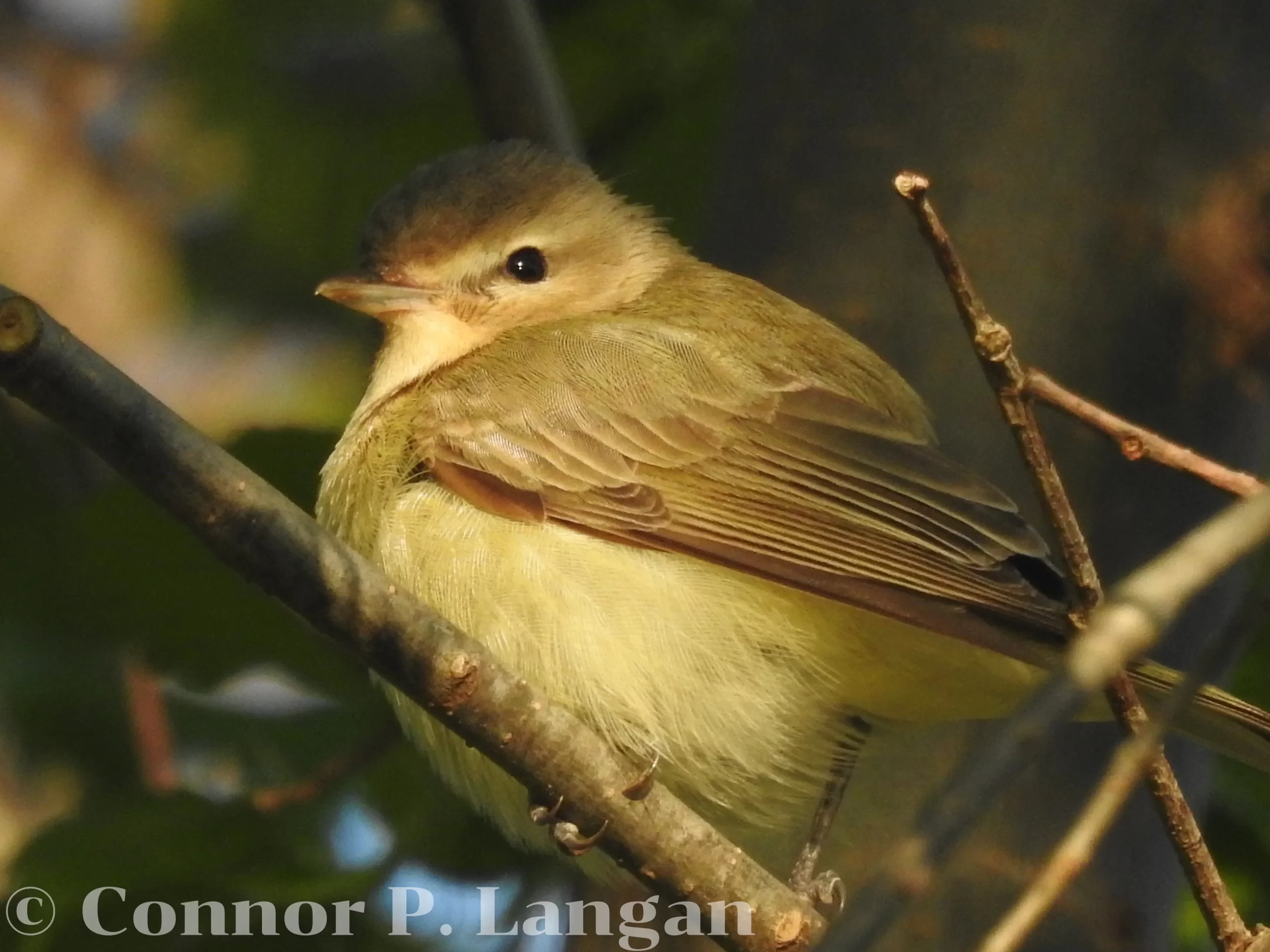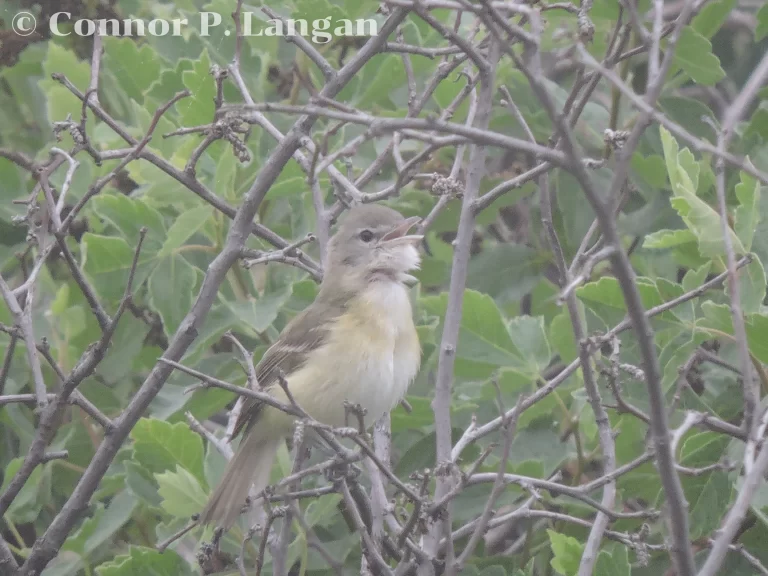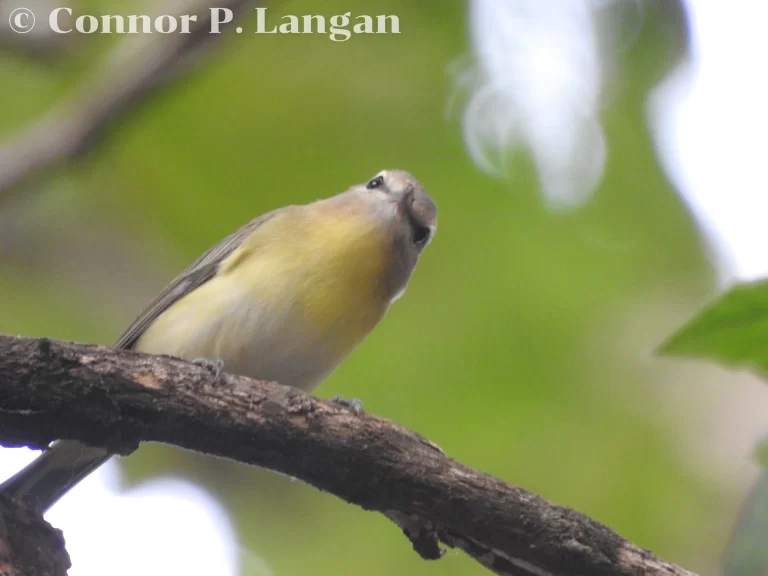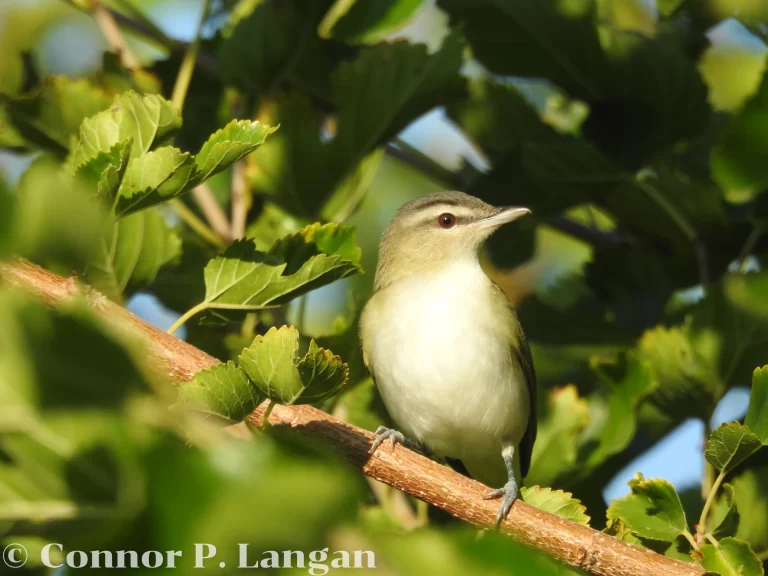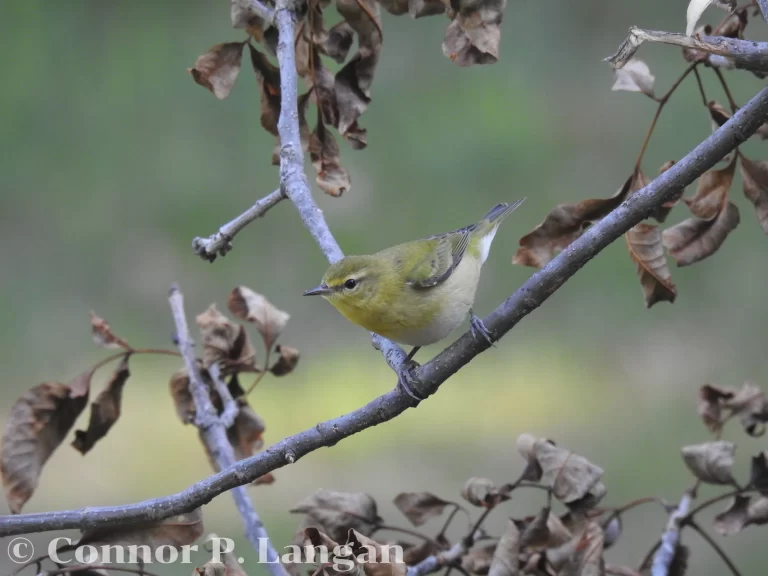Description
Warbling Vireos are a fairly chunky songbird with a small bill, medium-length tail, and proportionate head.
These songbirds measure 4.7 to just over 5 inches long. They weigh 0.3 to 0.6 ounces.
Males and females are sexually monomorphic – they look the same. However, there are regional differences within this species.
The Eastern subspecies of Warbling Vireo tend to have a yellow-colored wash to its undersides. The Western subspecies lacks this color, being pale below. Eastern birds tend to be less drab overall than Western birds.
All Warbling Vireos have a dark line that goes through their eyes. Additionally, these birds all have blue-gray legs.
Behavior
Warbling Vireos forage in the upper levels of trees for much of the year, but they may be found at eye level during migration.
Both males and females work together to defend their nest from intruders. Larger birds and mammalian threats are met with aggressive assaults from Warbling Vireos if they encroach on a nest.
Warbling Vireo Diet
Warbling Vireos consume a diet of primarily insects throughout the year. They eat fruit during the fall and winter, but insects remain their primary prey.
Caterpillars are highly sought after by these songbirds. Warbling Vireos will repeatedly smack their insect prey on branches to stun it before consumption.
Habitat
Warbling Vireos favor semi-open habitats with trees interspersed throughout the landscape. These birds are particularly abundant in areas adjacent to water such as rivers, streams, marshes, or lakes.
Watch for this species in parks, woodlots, and forests during migration. They can be found in mixed oak and pine forests, various plantations, and other forested areas during the winter.
Range
These widespread vireos breed in almost every state save for Hawaii and Florida. Additionally, Warbling Vireos breed in the mountains and foothills of central Mexico.
These vireos spend the winter in Mexico and Central America.
Breeding
These birds tend to be monogamous during the breeding season. Males perform strange-looking courtship displays to potential mates. If a female is receptive, she will peck at his beak with her closed beak.
Females handle all of the nest construction responsibilities by themselves while males supervise. Nests can be as low as a few feet off the ground and as high as over 100 feet up in a tree.
Warbling Vireo nests are cup-shaped structures that are made of a variety of plant fibers, fur, and some human-made materials.
A female produces between one and two broods of eggs every year, with each clutch containing anywhere from 1 to 6 eggs. The young hatch in about two weeks, while they fledge in just shy of another two weeks.
Backyard Birding
Warbling Vireos will not feed from bird feeders. However, these birds may feed on berries or insects located on shrubs placed in yards. Moreover, this species will bathe in bird baths if they aren’t exposed.
Warbling Vireo Population Status
Numbers of these birds have prospered in the past few decades, with the population increasing by nearly 30% in the past 50 years. Close to 53 million Warbling Vireos exist today.
There are still plenty of threats to these birds today despite prosperous populations. These songbirds are susceptible to pesticide spraying and habitat loss. Habitat loss around their wintering range is particularly detrimental to these birds, as their wintering range is much smaller than their breeding range.

